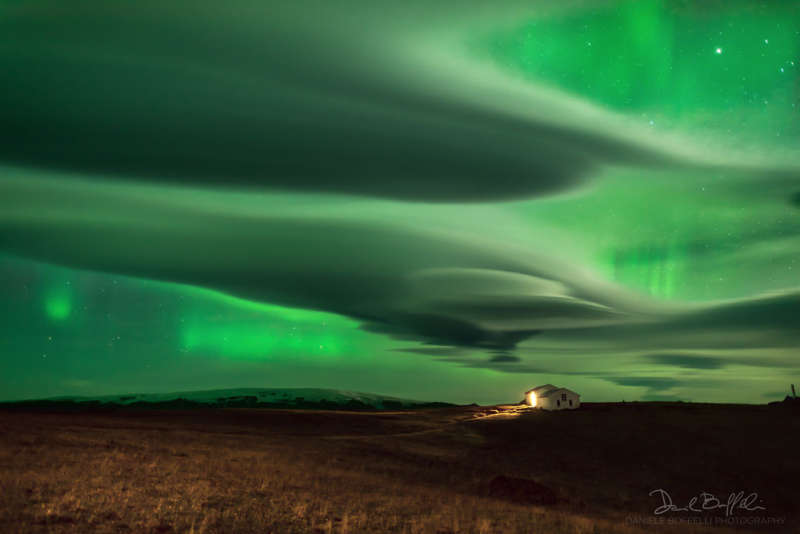Credit & Copyright: Daniele Boffelli
Explanation:
Auroras usually occur high above the clouds.
The auroral glow is created
when fast-moving particles ejected from the Sun impact the
Earth's magnetosphere, from which charged particles spiral along the
Earth's magnetic field to strike atoms and molecules high in the
Earth's atmosphere.
An oxygen atom, for example,
will glow in the green light commonly emitted by an
aurora after being energized by such a collision.
The lowest part of an
aurora will typically occur about 100 kilometers up,
while most clouds exist only below about 10 kilometers.
The relative heights of clouds and
auroras are shown clearly in
the
featured picture in 2015 from
Dyrholaey,
Iceland.
There, a determined astrophotographer withstood
high winds and initially overcast skies in an attempt to capture aurora over
a
picturesque lighthouse,
only to take, by chance, the featured picture including elongated
lenticular clouds,
along the way.
Follow APOD on Instagram in:
English,
Farsi,
Indonesian,
Persian, or
Portuguese
1999 2000 2001 2002 2003 2004 2005 2006 2007 2008 2009 2010 2011 2012 2013 2014 2015 2016 2017 2018 2019 2020 2021 2022 2023 2024 2025 |
Yanvar' Fevral' Mart Aprel' Mai Iyun' Iyul' Avgust Sentyabr' Oktyabr' Noyabr' Dekabr' |
NASA Web Site Statements, Warnings, and Disclaimers
NASA Official: Jay Norris. Specific rights apply.
A service of: LHEA at NASA / GSFC
& Michigan Tech. U.
|
Publikacii s klyuchevymi slovami:
aurora - clouds - severnoe siyanie - oblaka
Publikacii so slovami: aurora - clouds - severnoe siyanie - oblaka | |
Sm. takzhe:
Vse publikacii na tu zhe temu >> | |
